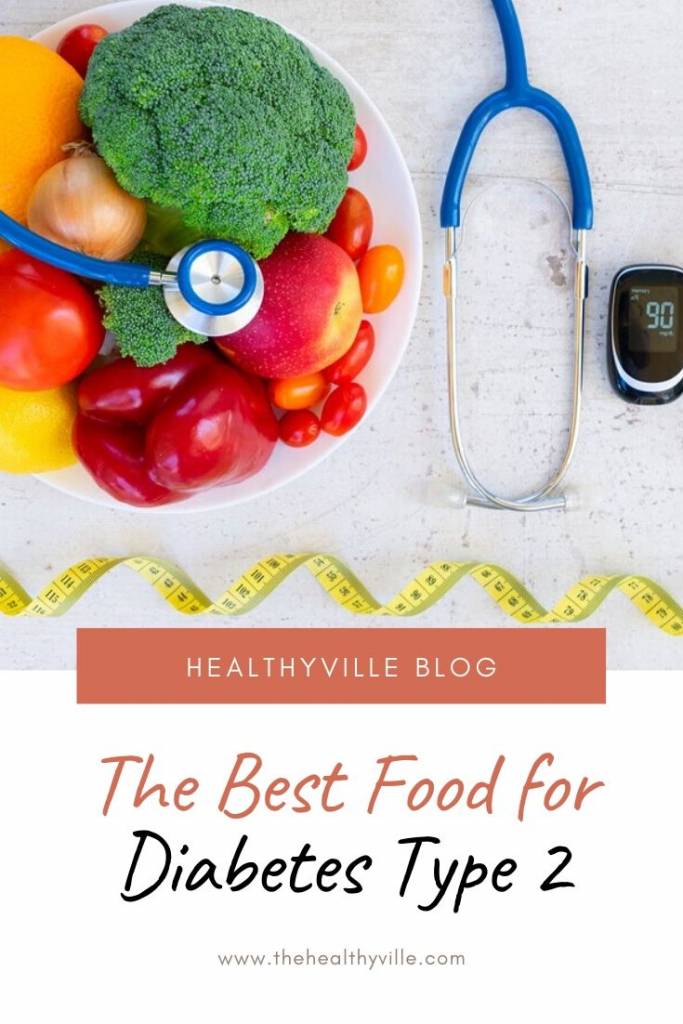Knowing the best food for diabetes type 2 can significantly change your life. Learn about them and start consuming them.
Nutrition plays a very important role in the control of type 2 diabetes. Therefore, patients suffering from this disease should receive advice for adequate nutritional treatment.
Nutritional treatment plays an important role in the management of type 2 diabetes. Although there are many factors that affect the development of this disease, including the best food for diabetes type 2 is crucial to control it and avoid complications. What should you know about it?
What is type 2 diabetes?
Diabetes mellitus is a chronic metabolic disorder that manifests with glucose levels higher than those recommended in the blood. In the specific case of type 2 diabetes, the body stops using insulin correctly. The latter is a hormone produced by the pancreas whose function is to help glucose enter the cells and be used as energy.
Among the risk factors for developing this pathology are:
- having a family history of diabetes mellitus,
- age,
- suffering from obesity
- and physical inactivity.
In fact, it is common for people with type 2 diabetes to be obese or overweight.
In these patients, the energy reduction in the diet, while maintaining an adequate and healthy supply of nutrients in the meals, is beneficial to promote weight loss. Losing weight could translate into benefits in both glycemic control and blood pressure.
The best food for diabetes type 2
Since there is no ideal pattern for all patients, nor a percentage of macronutrients that can be used in general. According to current evidence, the most recommended treatment would be a joint diet and physical activity plan as prescribed by a professional.
According to the latest consensus of the American Diabetes Association (ADA), the goals of nutritional treatment should be:
Improve glycosylated hemoglobin parameters, reduce hypertension and cholesterol levels.
Achieve and maintain a healthy weight. At this point the adherence and change of habits of the patient is of special interest.
Prevent complications
Therefore, one of the points that must be taken into account, once the disease is diagnosed, is the dietary factor.
Carbohydrates
Foods that are high in carbohydrates.
Patients with type 2 diabetes should choose complex carbohydrate sources over simple ones.
Fruits, vegetables, vegetables, legumes and whole grain cereals. These foods should be the main source of carbohydrates in any healthy diet, but especially for these patients. Being formed in part by fiber, its entry into the bloodstream is slower and glycemic peaks do not occur.
In addition, they increase the feeling of satiety, which helps weight control. According to different studies, fiber consumption seems to have a beneficial effect on serum cholesterol levels and other causes of cardiovascular risk such as hypertension.
Therefore, a consumption of approximately 26 grams per day in women and 28 grams per day in men is also recommended in people with type 2 diabetes.
It is not the case with foods rich in simple carbohydrates, where we would find pastries, sweets, fruit juices, and so on. These foods are devoid of fiber and, therefore, their impact on blood glucose is greater.
The consumption of whole grain cereals (cereals that retain their three parts, germ, bran and endosperm, also called whole grains) has been studied and, although there is insufficient evidence to justify a better glycemic control with their consumption, it has been related to decreased systemic inflammation and mortality.
Non-caloric sweeteners
Although studies affirm that non-caloric sweeteners such as saccharin or stevia do not alter glycemic function, many of the foods that contain them could alter it due to the ingredients used in the elaboration of the product.
It may be beneficial to reduce the consumption of sucrose or “table sugar,” although more studies are needed to confirm it.
Other foods
As for the rest of the food, the recommendations would be the same as for the general population. Proteins they must also be individualized, but the recommendations are as for the rest of the people. In fact, the intake of proteins of high biological value could be related to an improvement in the response to insulin, without increasing plasma blood glucose.
In the case of fat, as in the case of proteins; the evidence suggests that the quantity is not so important but the quality of these. You should increase the consumption of good quality fats. Examples are seeds, avocados, fatty fish, etc. Decrease the worst quality, existing in processed meats and precooked foods, among others.
Meals with omega 3 for the nutritional treatment of diabetes
Foods rich in proteins of high biological value and healthy fats also have a place in the diet for patients with diabetes.
Other recommendations for the nutritional treatment of type 2 diabetes include:
Choose healthy dishes in which carbohydrates are low glycemic.
Control foods rich in trans and saturated fats because of their relationship with the increase in dyslipidemia.
In the case of fish, especially blue fish, its recommendation is equal to that of people who do not have diabetes. Because of its omega 3 fatty acid content, it is recommended to take fatty fish at least twice a week.
To reduce the risk of dyslipidemia, it is also advisable to take foods rich in sterols (usually enriched), always within a healthy diet.
Moderating consumption of dairy products, especially fermented products (such as yogurts and cheeses), seems to be beneficial in the control and prevention of type 2 diabetes.
Don’t forget SHARE the best food for diabetes type 2 with your friends and family on your social networks!

